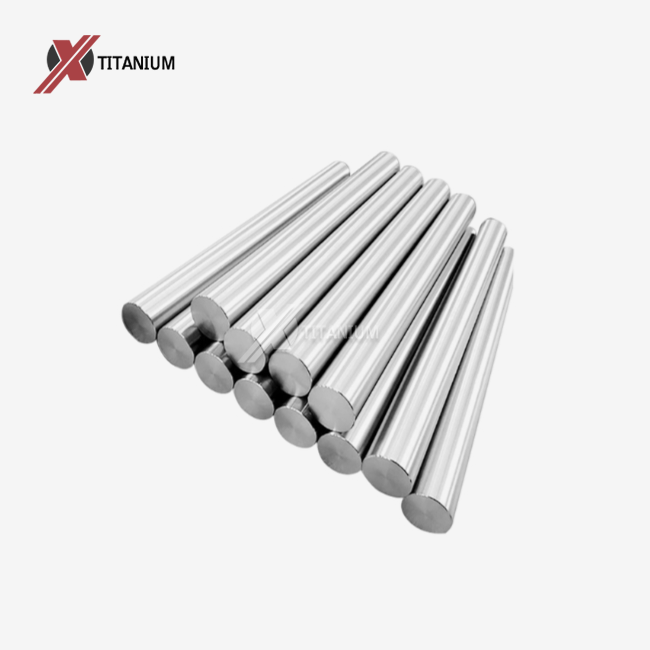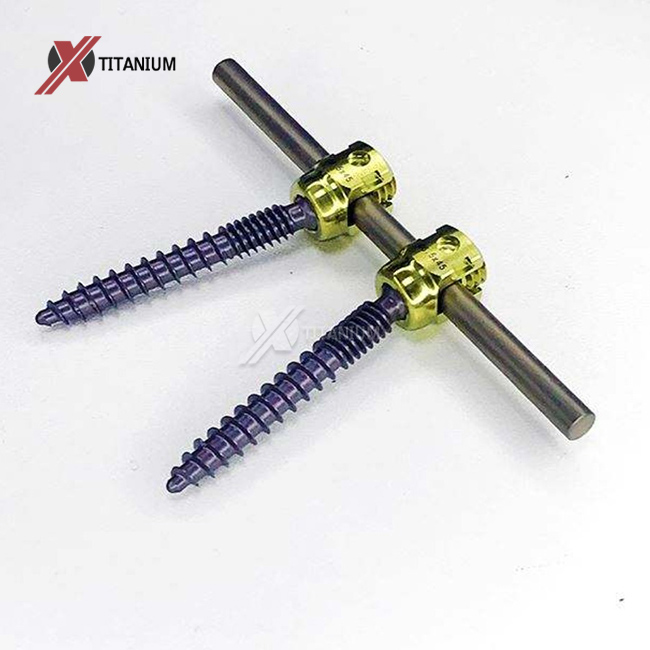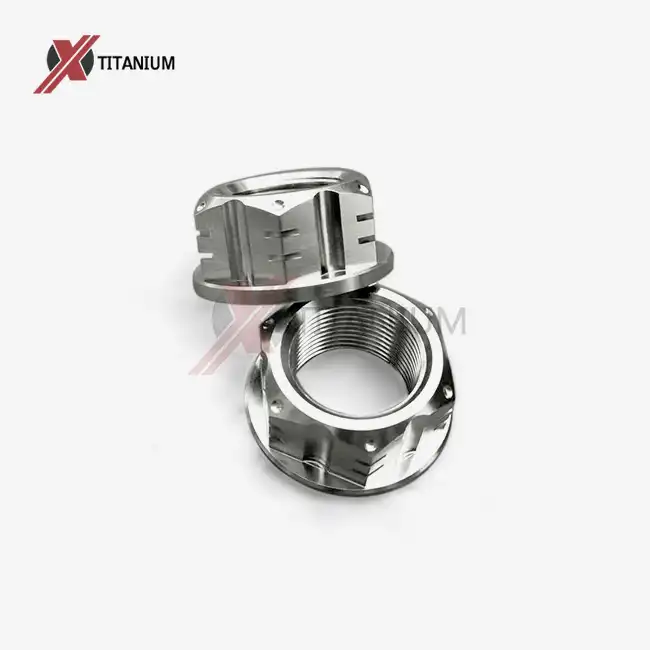Properties and Advantages of Grade 2 Titanium Rods in Heat Exchange Applications
Corrosion Resistance and Longevity
One of the most significant advantages of using grade 2 titanium rods in heat exchangers and condensers is their exceptional corrosion resistance. These rods can withstand exposure to a wide range of corrosive media, including saltwater, acids, and industrial chemicals. This property ensures that heat exchangers and condensers made with grade 2 titanium rods maintain their integrity and performance over extended periods, even in harsh operating conditions.
The corrosion resistance of grade 2 titanium rods is attributed to the formation of a stable, passive oxide layer on their surface. This layer acts as a protective barrier, preventing further oxidation and corrosion. As a result, heat exchangers and condensers constructed with these rods require less frequent maintenance and replacement, leading to reduced downtime and lower operational costs.
Thermal Conductivity and Efficiency
While grade 2 titanium rods may not have the highest thermal conductivity compared to some other metals, they offer a favorable balance between heat transfer efficiency and corrosion resistance. The thermal conductivity of grade 2 titanium is sufficient for many heat exchange applications, especially when considering its other beneficial properties.
The efficiency of heat exchangers and condensers made with grade 2 titanium rods is further enhanced by their ability to maintain clean surfaces. The smooth surface of titanium resists fouling and scaling, which can impede heat transfer in other materials. This characteristic ensures that the heat exchange efficiency remains high over time, reducing the need for frequent cleaning and maintenance.
Strength-to-Weight Ratio and Design Flexibility
Grade 2 titanium rods boast an impressive strength-to-weight ratio, allowing for the design of lightweight yet durable heat exchangers and condensers. This property is particularly advantageous in applications where weight is a critical factor, such as in aerospace or marine environments. The use of grade 2 titanium rods enables engineers to create compact, efficient heat exchange systems without compromising on structural integrity.
The versatility of grade 2 titanium rods also offers greater design flexibility. They can be easily machined, welded, and formed into various shapes, allowing for the creation of complex heat exchanger geometries. This flexibility enables the optimization of heat transfer surfaces and flow patterns, resulting in more efficient and effective heat exchange systems.
Applications of Grade 2 Titanium Rods in Heat Exchangers and Condensers
Chemical Processing Industry
In the chemical processing industry, grade 2 titanium rods are extensively used in the construction of heat exchangers and condensers. These components are often exposed to highly corrosive chemicals and extreme temperatures. The corrosion resistance and durability of grade 2 titanium rods make them ideal for handling aggressive media such as chlorine, sulfuric acid, and other corrosive substances.
Heat exchangers made with grade 2 titanium rods are commonly used in processes involving the production of chlor-alkali, petrochemicals, and specialty chemicals. The ability of these rods to withstand corrosive environments while maintaining efficient heat transfer properties ensures the longevity and reliability of the equipment, ultimately leading to improved process efficiency and reduced maintenance costs.
Power Generation and Desalination Plants
Grade 2 titanium rods play a crucial role in the construction of heat exchangers and condensers used in power generation and desalination plants. In these applications, the equipment is often exposed to seawater or brackish water, which can be highly corrosive to many materials. The superior corrosion resistance of grade 2 titanium rods makes them an excellent choice for these challenging environments.
In power plants, titanium heat exchangers are commonly used in steam condensers and cooling systems. The use of grade 2 titanium rods in these applications ensures long-term reliability and minimizes the risk of equipment failure due to corrosion. Similarly, in desalination plants, titanium heat exchangers are essential for the efficient transfer of heat in multi-stage flash distillation and other desalination processes.
Marine and Offshore Applications
The marine and offshore industries benefit greatly from the use of grade 2 titanium rods in heat exchangers and condensers. These applications often involve exposure to saltwater and other corrosive marine environments. The exceptional corrosion resistance of grade 2 titanium rods makes them ideal for use in shipboard heat exchangers, offshore platform cooling systems, and submarine condensers.
In addition to their corrosion resistance, the lightweight nature of grade 2 titanium rods is particularly advantageous in marine applications. The reduced weight of titanium heat exchangers contributes to improved fuel efficiency in ships and helps minimize the overall weight of offshore structures. Furthermore, the durability of titanium components reduces the need for frequent maintenance and replacement, which is especially beneficial in remote offshore locations.
Manufacturing and Fabrication Considerations for Grade 2 Titanium Rod Heat Exchangers
Material Selection and Quality Control
When manufacturing heat exchangers and condensers using grade 2 titanium rods, proper material selection and quality control are paramount. It is essential to source high-quality grade 2 titanium rods from reputable grade 2 titanium rod suppliers to ensure consistent performance and reliability. The rods should meet the required specifications for chemical composition, mechanical properties, and dimensional tolerances.
Quality control measures should be implemented throughout the manufacturing process to verify the integrity of the grade 2 titanium rods. This may include non-destructive testing techniques such as ultrasonic testing, eddy current testing, and radiographic inspection to detect any internal defects or inconsistencies in the material.
Welding and Joining Techniques
Welding is a critical aspect of fabricating heat exchangers and condensers using grade 2 titanium rods. Titanium is highly reactive at elevated temperatures, necessitating specialized welding techniques to ensure the quality and integrity of the joints. Gas tungsten arc welding (GTAW) is commonly used for joining titanium components due to its ability to produce high-quality, contamination-free welds.
When welding grade 2 titanium rods, it is essential to maintain a clean and inert atmosphere to prevent oxidation and contamination of the weld. This often involves using argon gas shielding and ensuring proper cleanliness of the welding area and equipment. Post-weld heat treatment may also be necessary to relieve residual stresses and optimize the mechanical properties of the welded joints.
Surface Finishing and Passivation
Proper surface finishing of grade 2 titanium rods used in heat exchangers and condensers is crucial for optimizing their performance and corrosion resistance. After fabrication, the titanium surfaces should be thoroughly cleaned to remove any contaminants or residues from the manufacturing process. This may involve chemical cleaning, pickling, or mechanical polishing techniques.
Following cleaning, a passivation treatment is often applied to enhance the natural oxide layer on the titanium surface. This process involves exposing the titanium to an oxidizing environment, typically through chemical or electrochemical means, to form a stable and uniform protective oxide film. Proper passivation ensures optimal corrosion resistance and longevity of the grade 2 titanium rod components in heat exchangers and condensers.
Conclusion
Grade 2 titanium rods have proven to be an invaluable material for the construction of heat exchangers and condensers across various industries. Their exceptional corrosion resistance, favorable strength-to-weight ratio, and thermal properties make them ideal for applications in challenging environments. From chemical processing plants to power generation facilities and marine applications, grade 2 titanium rods offer enhanced performance, longevity, and efficiency in heat exchange systems.
By carefully considering material selection, manufacturing techniques, and surface treatments, engineers can harness the full potential of grade 2 titanium rods to create robust and efficient heat exchangers and condensers that withstand the test of time and harsh operating conditions.
At Baoji Chuanglian New Metal Material Co., Ltd., we specialize in providing high-quality grade 2 titanium rods for heat exchanger and condenser applications. Our extensive experience in titanium product manufacturing ensures that we can meet the most demanding requirements of our customers. If you're looking for reliable grade 2 titanium rod suppliers for your heat exchange projects, we invite you to reach out to us. Contact us at info@cltifastener.com or djy6580@aliyun.com to learn more about our products and how we can support your heat exchanger and condenser manufacturing needs.
FAQ
What are the key advantages of using grade 2 titanium rods in heat exchangers?
Grade 2 titanium rods offer excellent corrosion resistance, high strength-to-weight ratio, and good thermal stability, making them ideal for heat exchangers in harsh environments.
How are grade 2 titanium rods manufactured for heat exchanger applications?
The manufacturing process typically involves cold rolling, hot rolling, annealing, and pickling. Surface treatments such as polishing or acid cleaning may be applied to enhance performance.
What quality tests are performed on grade 2 titanium rods?
Common tests include hardness testing, bending tests, and hydrostatic pressure tests to ensure the rods meet industry standards and performance requirements.
References
1. Smith, J. R., & Johnson, L. M. (2019). Titanium Alloys in Heat Exchanger Design: A Comprehensive Review. Journal of Materials Engineering and Performance, 28(4), 2145-2160.
2. Chen, X., & Wang, Y. (2020). Corrosion Behavior of Grade 2 Titanium in Seawater Heat Exchangers. Corrosion Science, 167, 108524.
3. Thompson, A. W., & Bernstein, I. M. (2018). The Role of Metallurgy in the Design of Titanium Heat Exchangers. Materials Science and Engineering: A, 742, 269-283.
4. Rodriguez, C., & Garcia, E. (2021). Fabrication Techniques for Titanium Heat Exchangers: Challenges and Innovations. Welding Journal, 100(5), 141-150.
5. Lee, H. S., & Kim, J. H. (2017). Performance Evaluation of Titanium Heat Exchangers in Chemical Processing Industries. Chemical Engineering Journal, 330, 629-638.




